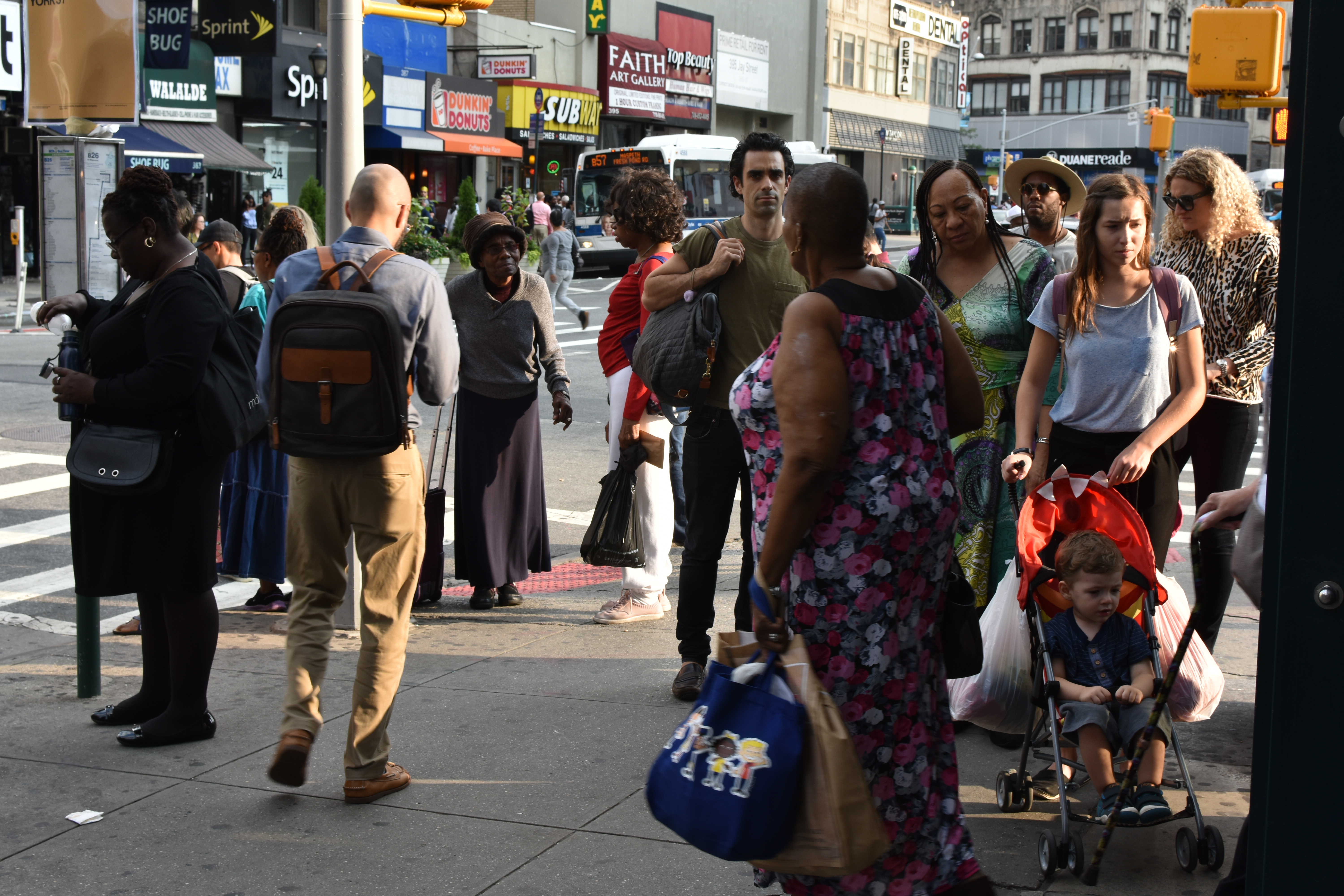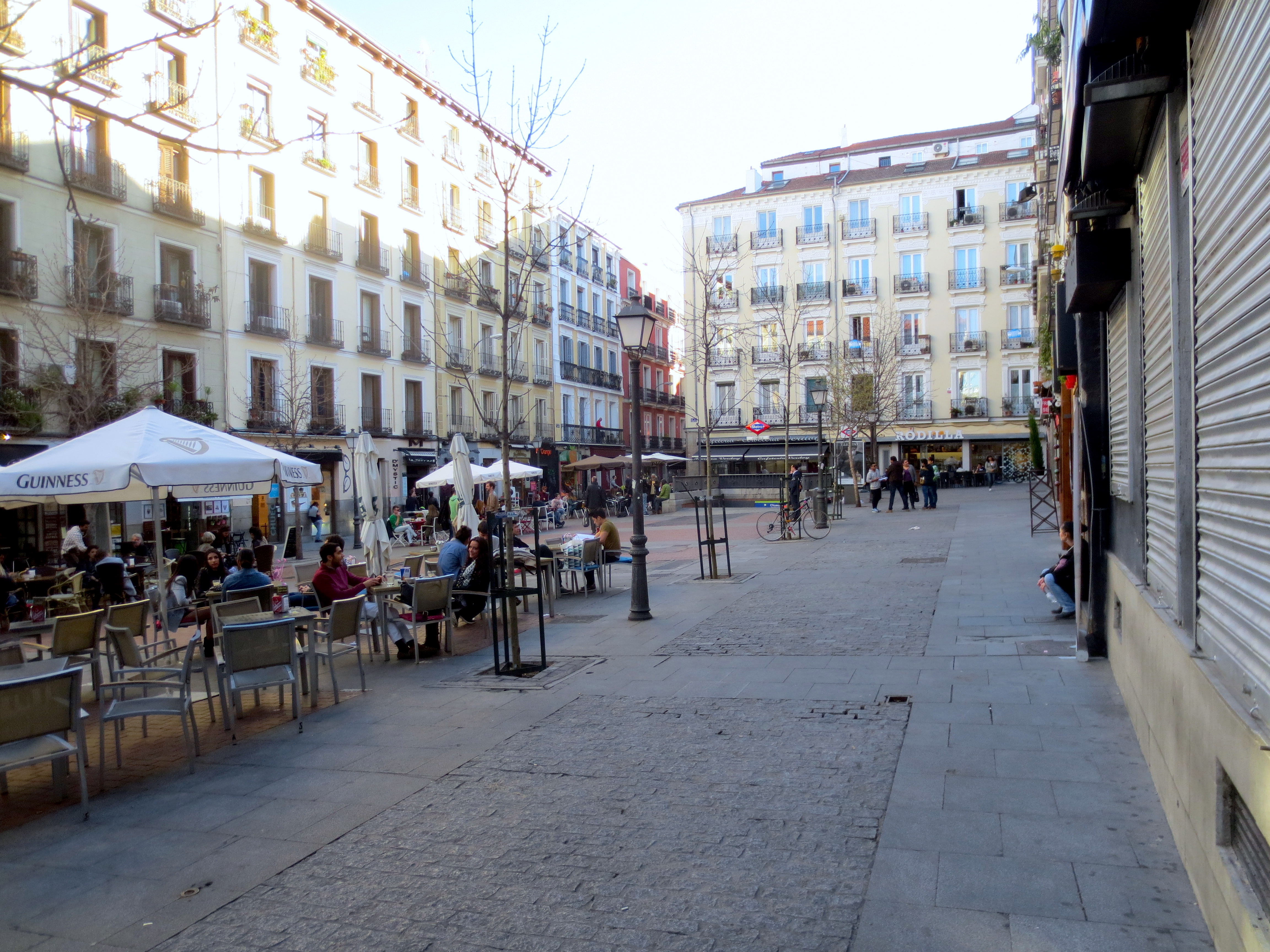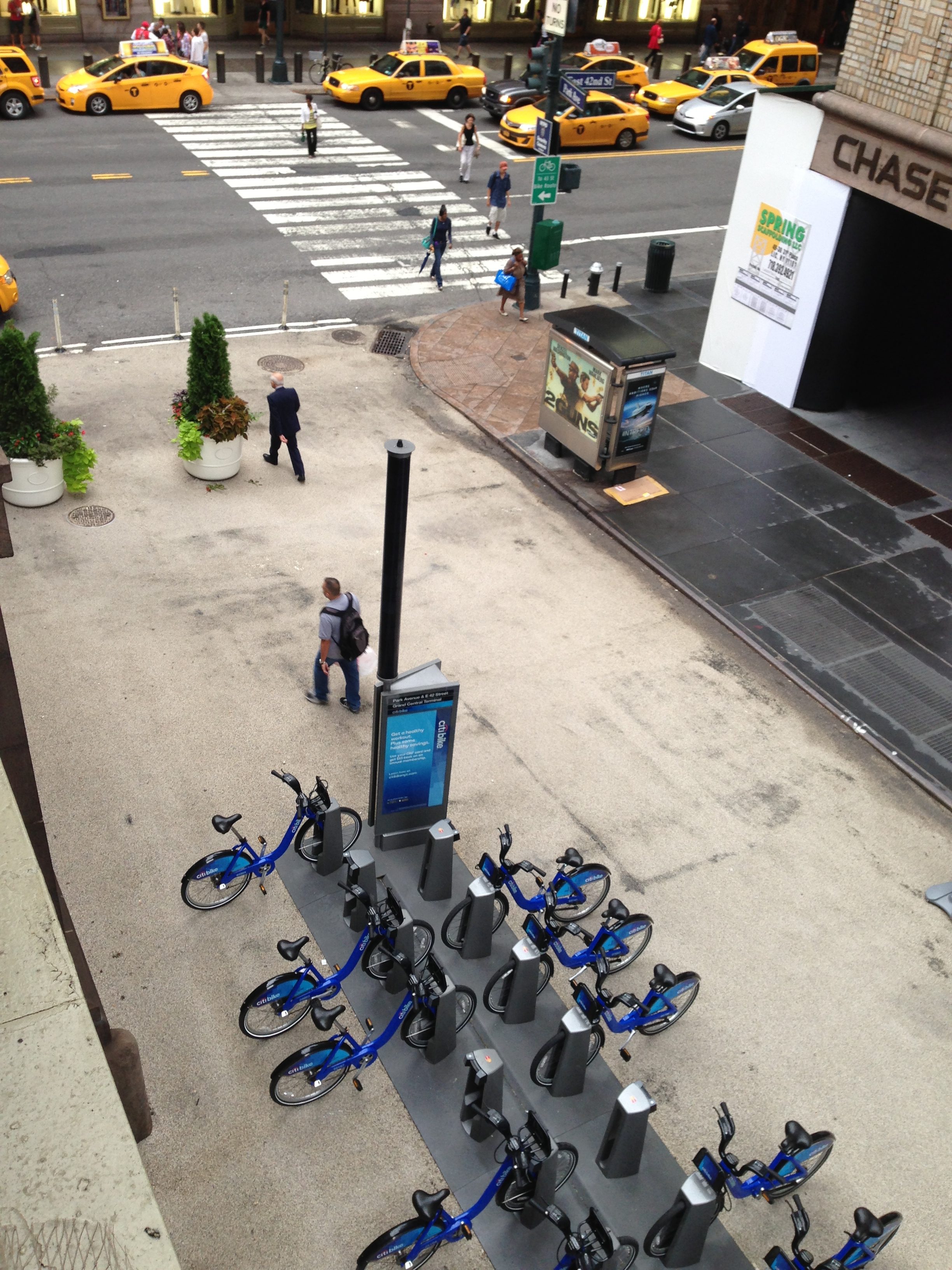
[rl_gallery id=”5492″]
New Yorkers are well versed in subway meltdowns and schleppy buses. But there is less public conversation about the quality of the spaces that get us to and from transit. Crowded, obstructed sidewalks, streets that don’t accommodate pedestrian desire lines and dangerous mid-block crossings are common conditions around some of NYC’s busiest transit hubs. NYC’s Department of Transportation has acknowledged parts of the problem: new projects are increasing pedestrian capacity near Penn Station and Union Square, but in pedestrian- and transit-rich New York, we need more systematic walking improvements around transit.
In an effort to identify potential sites for walkability upgrades, TransitCenter’s Jeannette K. Watson Fellow, Amelia Smyth, spent the summer observing space around busy transit stations. What she found comes as no surprise: pedestrian infrastructure around subway and bus hubs is inadequate and in places downright unsafe. Pedestrians cram shoulder to shoulder under endless scaffolding and trash piles, drivers speed around corners and illegally block sidewalks and curbs. Parents with strollers and wheelchair users battle to get through.
The NYC-DOT currently maintains an application-based plaza program, which is responsible for the newest public spaces in the city. The agency also has a pedestrian projects division, which makes safety improvements to intersections on an ongoing basis. An intermediate treatment – pedestrian streets that provide space but don’t necessarily need seating or other programming – has not been a strong part of the city’s repertoire. But it could be the quick ticket to walkability at major NYC transit stations. New strategies to pedestrianize city blocks near transit would achieve twin goals of safety and better quality of life for millions of people.

As this example from Madrid demonstrates, pedestrian streets and transit stations go hand in hand.

There’s also precedent in NYC! Pershing Square near Grand Central was transformed into pedestrian space in less than a week.
 On the Brink: Will WMATA’s Progress Be Erased by 2024?
On the Brink: Will WMATA’s Progress Be Erased by 2024?
The experience of being a WMATA rider has substantially improved over the last 18 months, thanks to changes the agency has made like adding off-peak service and simplifying fares. Things are about to get even better with the launch of all-door boarding later this fall, overnight bus service on some lines starting in December, and an ambitious plan to redesign the Metrobus network. But all of this could go away by July 1, 2024.
Read More Built to Win: Riders Alliance Campaign Secures Funding for More Frequent Subway Service
Built to Win: Riders Alliance Campaign Secures Funding for More Frequent Subway Service
Thanks to Riders' Alliance successful #6MinuteService campaign, New York City subway riders will enjoy more frequent service on nights and weekends, starting this summer. In this post, we chronicle the group's winning strategies and tactics.
Read More